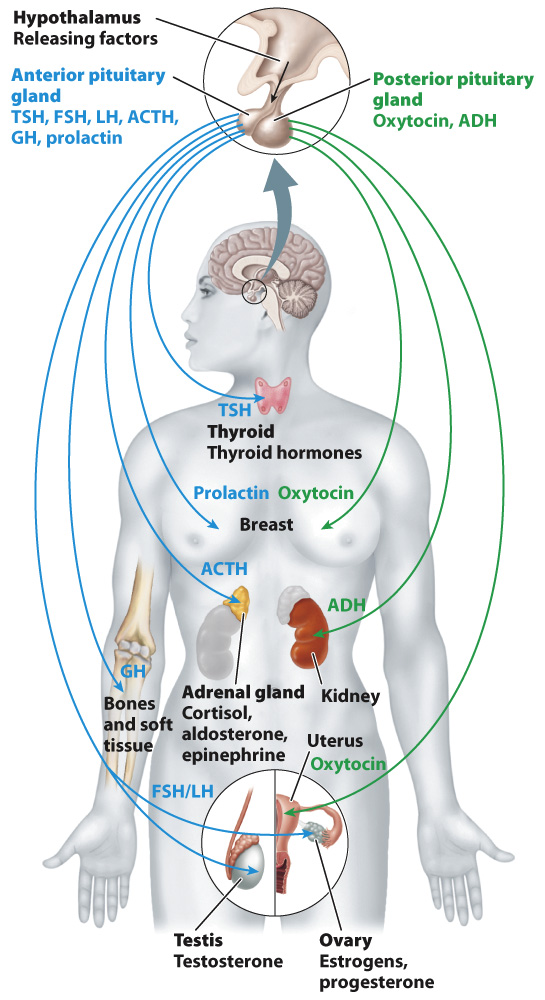38.3 The Vertebrate Endocrine System
The vertebrate endocrine system regulates changes in the animal’s physiological and behavioral states in response to sensory cues received by its nervous system both from the environment and from internal organs. Whereas certain sensory signals may communicate directly to endocrine glands or tissues in the body, many are processed within the brain and transmitted to the endocrine system by the hypothalamus, which is located in the forebrain (Fig. 38.10). The hypothalamus, in turn, relays these signals to the pituitary gland, which lies just below it. The pituitary gland is a central regulating gland of the vertebrate endocrine system: It releases several hormones that coordinate the action of many other endocrine glands and tissues. These glands, illustrated in Fig. 38.10, control the growth and maturation of the body, regulate reproductive development and metabolism, and control of water balance. These effects reflect the broad range of roles that the endocrine and nervous systems perform in regulating body maturation and maintaining homeostasis.

The pituitary gland communicates with many cells, tissues, and organs of the body. Some of these, like the thyroid and adrenal glands, secrete hormones in response to signals from the pituitary gland and therefore have exclusively endocrine functions. Others, like the lungs, kidneys, and digestive tract, harbor endocrine cells that secrete hormones and also have other physiological roles in the body. Consequently, the vertebrate endocrine system is not localized in one part of the body, but is present throughout.